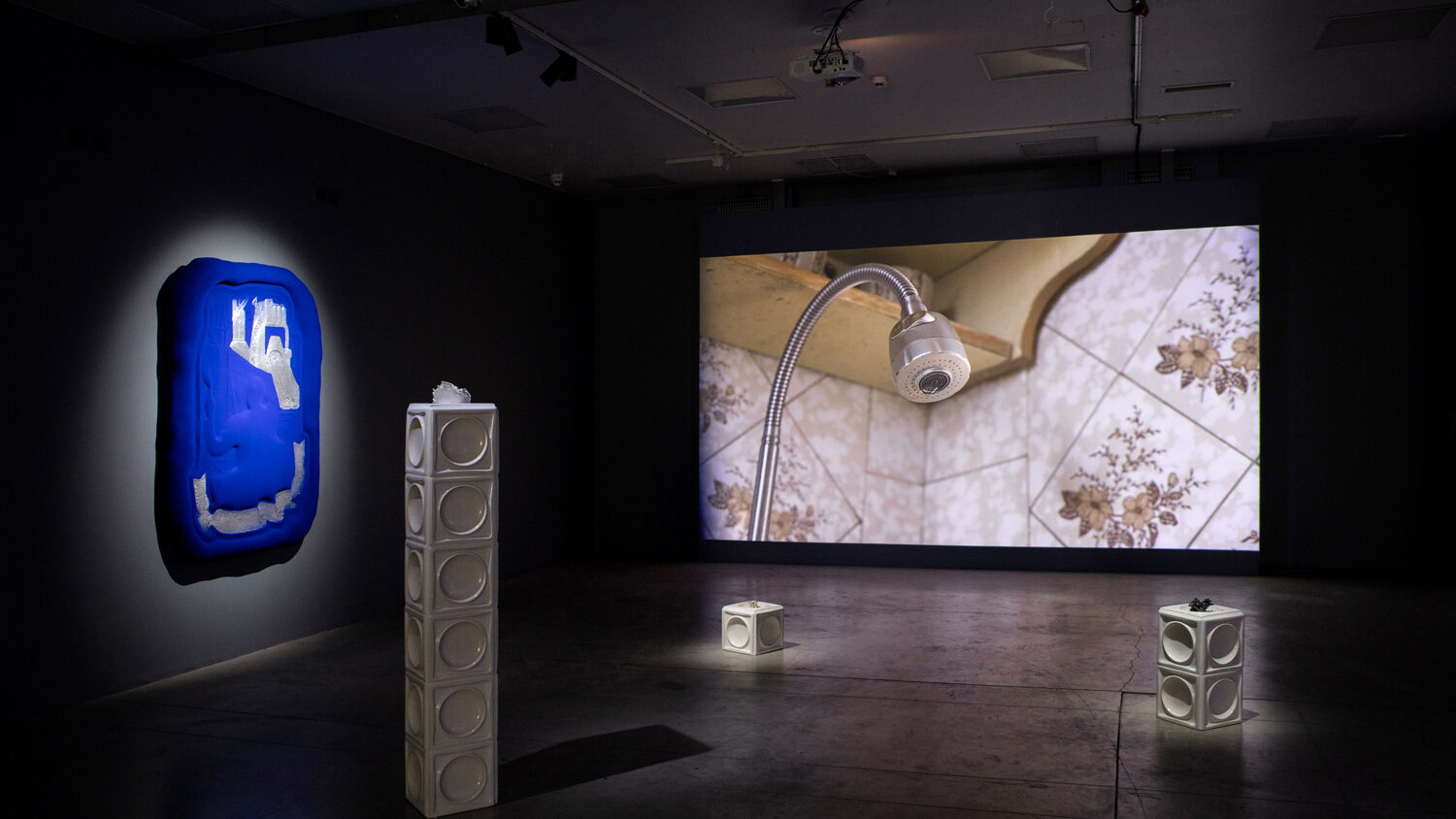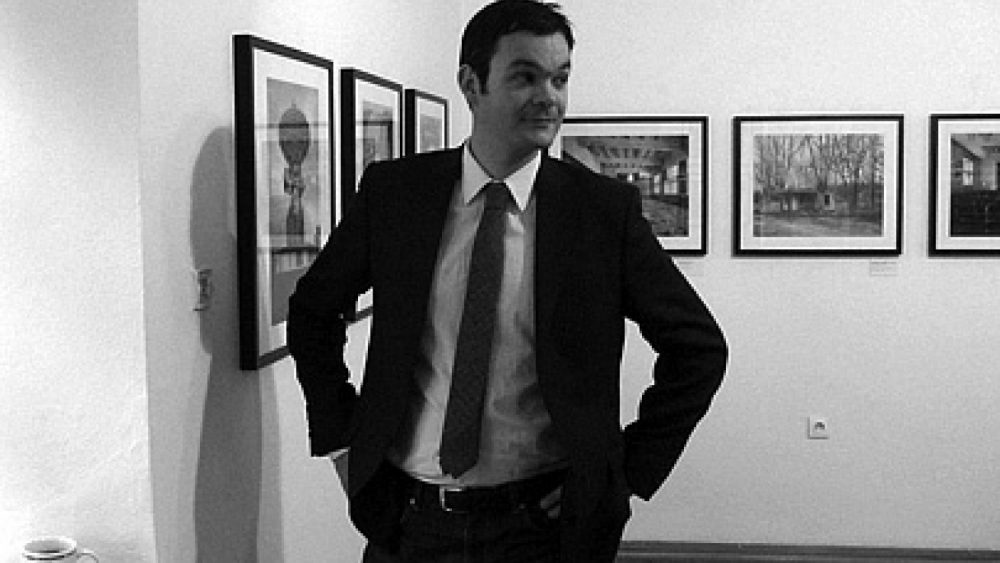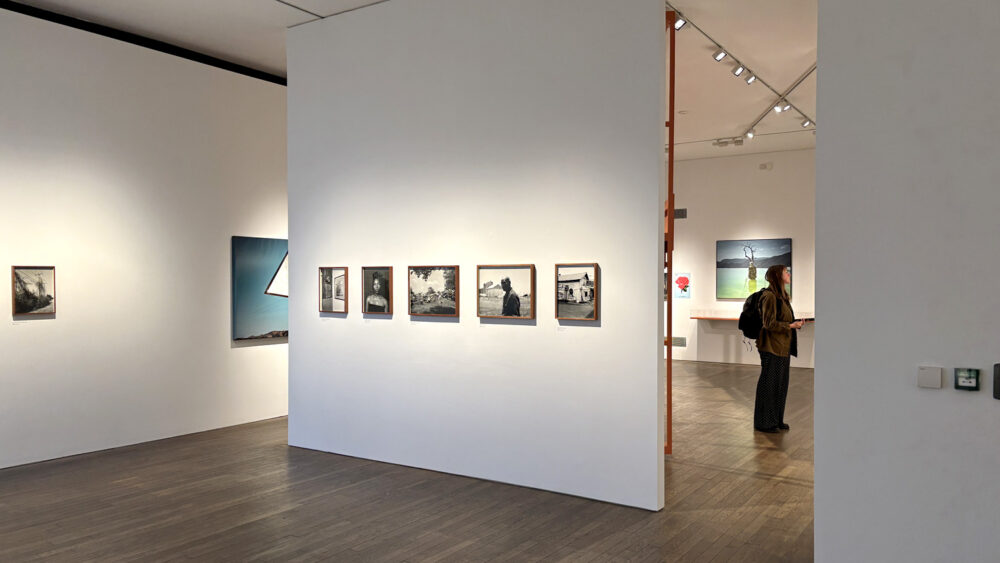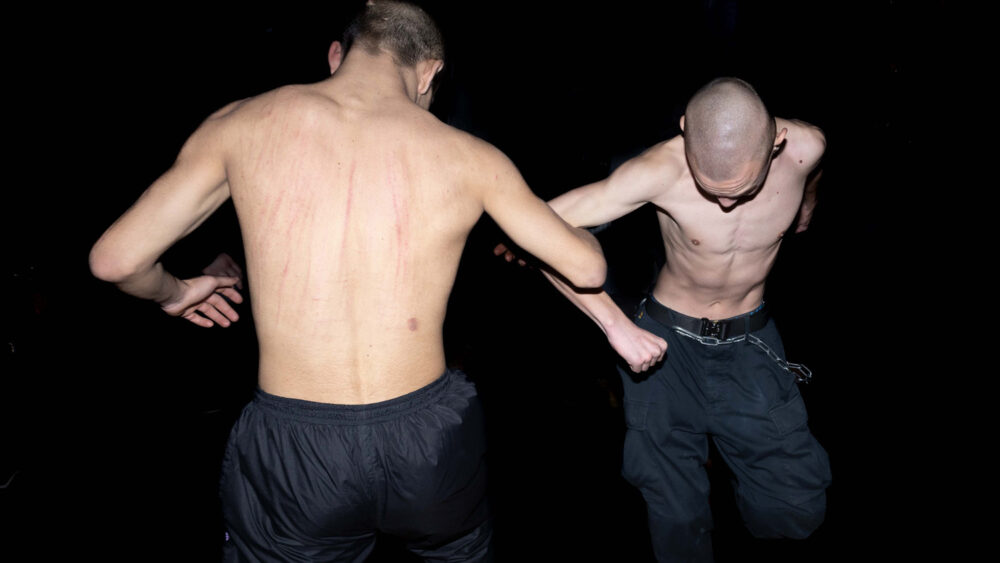Chronosphere and war memories. Interview with Lesia Vasylchenko
Lesia Vasylchenko (born in Kyiv, Ukraine) works across a range of media, including video, photography, installation, and curatorial. In her research-based practice, Vasylchenko explores encounters between visual cultures, media technologies, and chronopolitics. She holds a degree in Journalism from the Taras Shevchenko National University of Kyiv and in Fine Arts from the Oslo National Academy of the Arts. She founded STRUCTURE. Time – an interdisciplinary research and creative initiative in visual arts, media archaeology, literature and philosophy.
Until 6 July, the exhibition Chronosphere by Vasylchenko is on view at the Riga Contemporary Art Space, Intro Hall. Curators of the exhibition are Inga Brūvere and Marie Sjøvold. It is part of the Riga Photography Biennial, where this year the young artists focus on the theme ‘invisible but present’.
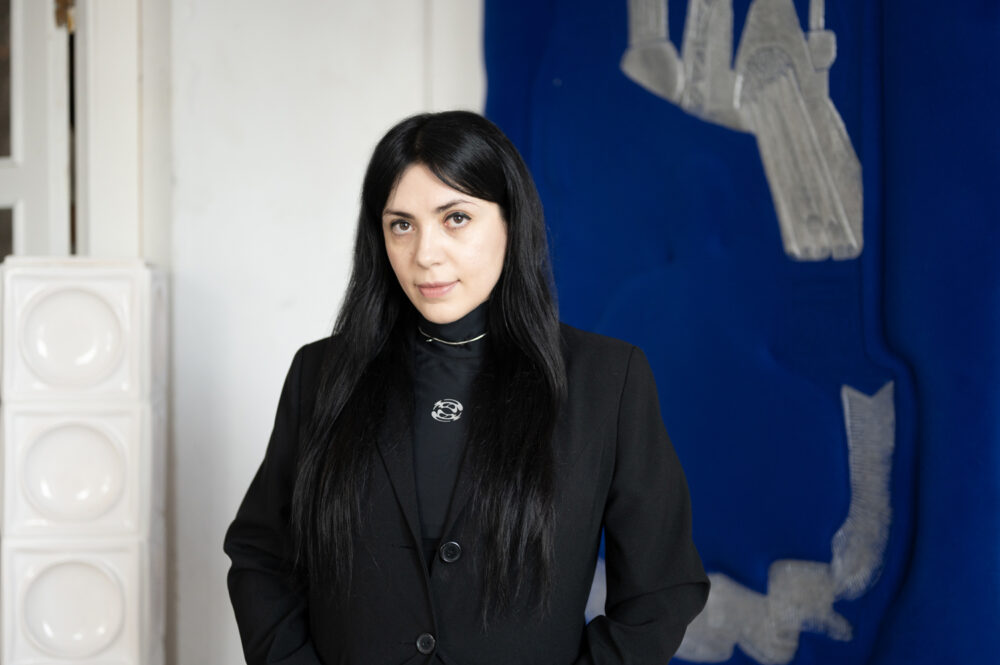
Tell us more about your exhibition Chronosphere! What are the main themes of the exhibition and how does it fit into the archive of your work?
Chronosphere is my first solo exhibition in Riga, and it brings together a constellation of interconnected works that explore how different scales of time—ranging from the extremely fast, like satellite synchronization, to the vast and slow, like ecological trauma—interact with human and more-than-human life. The speculative notion of a “chronosphere” serves as the conceptual framework for the exhibition. I imagine the chronosphere as a kind of atmospheric layer composed of temporal currents—an ever-shifting medium in which pasts, presents, and possible futures coexist and influence one another.
One of the core themes of the exhibition is the disruption and reconfiguration of time caused by war. The current war in Ukraine—my home country—has deeply shaped the works on view. War collapses temporal structures; it fragments personal and collective time, embedding trauma into the fabric of daily life and even into landscapes. Chronosphere reflects on how these disruptions resonate not only through human experience but also through ecological systems and material memory.
The exhibition moves fluidly between speculative futures and archaeological remnants of the present. It begins with a conceptual grounding in Eduard Suess’s idea of Earth’s envelopes and Volodymyr Vernadsky’s Noosphere—the sphere of human thought. Chronosphere adds to this by proposing a temporal layer: one where time itself becomes a medium of contact, resistance, and imagination. In this way, the exhibition fits squarely into my broader practice, which often investigates how time, systems, memory, and technological mediation intersect.
The central video work, Chronosphere (2024), is a 31-minute parafictional narrative that maps out these ideas. It brings together CGI animation, satellite data, filmed footage, and AI-generated imagery to imagine a speculative trial—held before a “court of Time.” The work navigates scales of duration, from the melting of glaciers to the brief blink of computational cycles, from lithium extraction sites to the threatened Zaporizhzhia nuclear plant. It tries to visualize our place within this chronosphere—as beings suspended in a cloud of past events and future probabilities.
Other works take the form of material “testimonies”—artifacts that hold temporal and emotional weight. In Testimony of Soil from Gostomel, I use a small sample of earth from the site where the Russian invasion began. It becomes a carrier of memory, a witness to violence whose temporal relevance extends far beyond human comprehension. Testimony of Tableware from Borodyanka presents fused domestic objects salvaged from bombed homes—intimate fragments reformed by extreme heat into new, haunting shapes. These pieces speak to how everyday objects silently absorb and transmit the legacy of conflict.
Testimony of a Weeping Willow touches on Ukrainian folklore and the symbolism of the willow tree, which was believed to return the spirits of the past. After the Nova Kakhovka dam was bombed and the region flooded, new willow saplings began to grow—emblems of ecological resilience and the cyclical nature of life, death, and return. The tree becomes a living archive, rooted in trauma but also in regeneration.
Another key work, Dedicated to the Palace of Youth Across All Imaginable Futures and Forgotten Pasts Soviet, engages with Soviet-era monumental reliefs and the ideology they carried. Using chroma key fabric and repurposed propaganda motifs, the work reflects on a nostalgia for a future that never arrived—a utopian vision that must now be critically re-evaluated. It raises questions about how we construct futures in the wake of failed ideologies and collective amnesia.
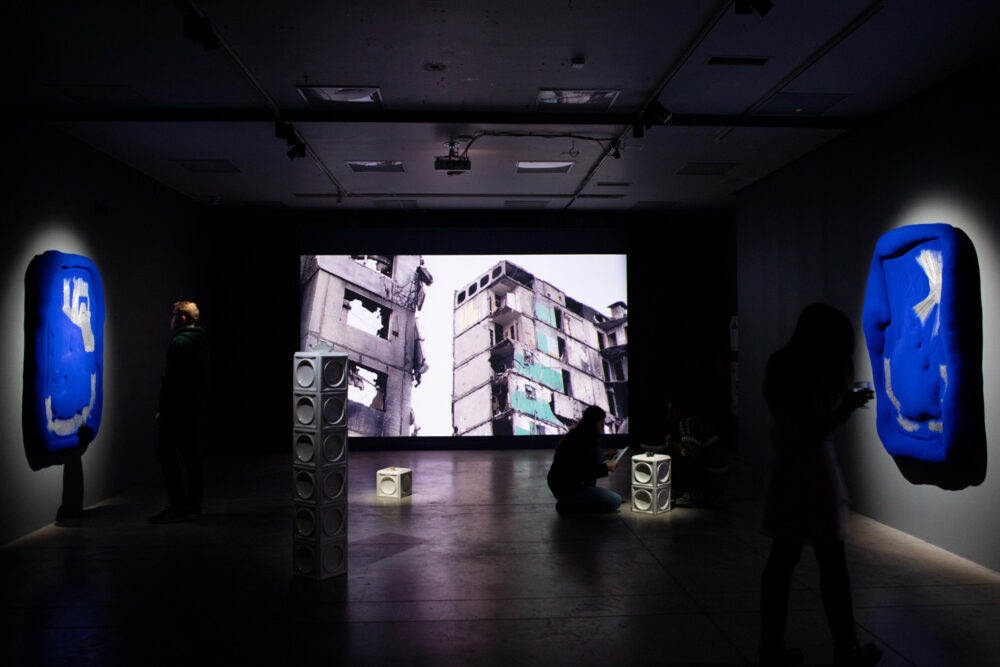
Finally, The Night (2025) is a 56-minute video that compresses a century of Ukrainian night skies—from 1918 to the present—into a continuous nocturnal flow. It becomes a meditation on historical trauma, memory, and the night as both a literal and metaphorical space of invisibility, fear, and spectral return. Drawing on Jacques Derrida’s idea of hauntology, the work explores how the past never truly disappears but continually resurfaces in the present.
Taken together, the works in Chronosphere create a multidimensional map of time—one that resists linearity and embraces simultaneity. They urge us to see time not as a line but as a fabric: layered, broken, healed, and still unfolding. This approach is central to my ongoing artistic inquiry into how systems of observation, memory, and storytelling can help us understand—and potentially transform—our relationship to time, history, and each other.
How important is photography in your work?
Photography plays a foundational yet evolving role in my practice. It’s not just a tool for documentation, but a way of seeing and constructing temporal relationships. In my work, photography often operates at the threshold between evidence and imagination—it’s where perception meets speculation. I’m particularly interested in how photographic technologies, especially in their expanded forms such as satellite imaging, synthetic-aperture radar, or AI-generated imagery, shape our understanding of time, territory, and memory.
For instance, in Chronosphere, many of the works—especially the central video piece—are built from photographic and photogrammetric data that span different temporal and spatial scales. Satellite photographs of planetary surfaces, archival images, and algorithmically produced visuals are layered to create a visual language that speaks not only about what is seen, but also about how it is seen—and by whom. This shift—from photography as a human-centered medium to one that also reflects machinic or planetary vision—is central to my approach.
Photography, in this expanded sense, allows me to engage with invisible or inaccessible phenomena—such as ecological damage, war zones, or speculative futures—and render them perceptible. It becomes both a forensic and poetic medium: collecting traces, offering testimony, and proposing counter-narratives.
In projects like Testimony of Soil from Gostomel or Testimony of Tableware from Borodyanka, photography is present not as an image but as a sensibility—the urge to preserve, to frame a moment, to give form to loss. Even when the medium isn’t explicitly photographic, the logic of photography—its relationship to time, presence, and absence—is deeply embedded in how I construct and think through my work.
So, photography is crucial, but not in a conventional or purely representational way. It is one of the temporal tools I use to explore how we document, remember, and imagine the shifting realities of our world.
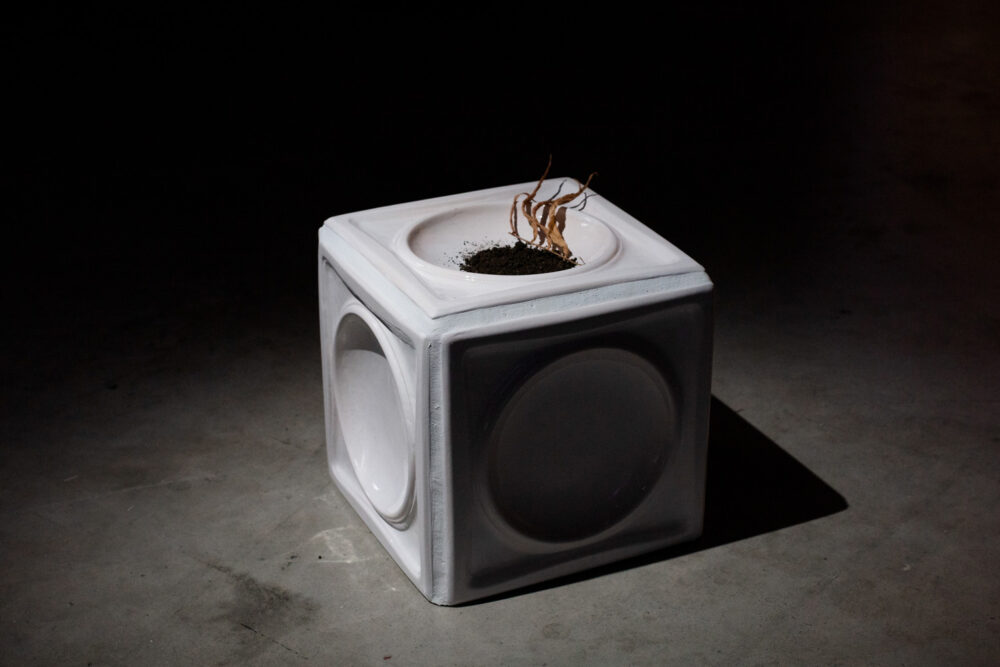
What kind of photography inspires you?
I’m particularly inspired by forms of photography that extend beyond the visible spectrum—especially remote sensing, and more specifically, InSAR (Interferometric Synthetic Aperture Radar). These technologies capture the Earth not as it appears to the human eye, but as it moves, shifts, and transforms over time. InSAR, for instance, can detect minute deformations in the Earth’s surface—millimeters of subsidence or uplift—caused by events like earthquakes, volcanic activity, or resource extraction. That ability to visualize invisible processes fascinates me.
This kind of imaging challenges traditional ideas of photography as a moment frozen in time. Instead, it becomes a temporal medium that maps change, memory, and trauma across scales and landscapes. It inspires me not just visually, but conceptually—it pushes me to think about photography as a way of sensing, not only seeing. It aligns closely with my interest in time, ecological systems, and the more-than-human.
In my work, these technologies become tools to speculate, testify, and bear witness—to tell stories that are not always accessible through conventional visual means. Remote sensing reveals how technologies observe us, and how we, in turn, begin to see the world through their logic. That shifting perspective is deeply influential in how I approach image-making and the politics of vision.
What do you see as the biggest challenges for you as an artist at the moment?
One of the biggest challenges I face right now is navigating how to respond to a world that feels increasingly fragmented and urgent—without falling into paralysis or simplification. The war in Ukraine, ecological collapse, the acceleration of technology, and the erosion of truth in public discourse all demand attention, yet they unfold on such different temporal and emotional scales. How do you visualize planetary trauma without overwhelming or alienating the viewer?
Another challenge is working with complex systems—technological, ecological, political—while still making space for intimacy, emotion, and ambiguity. Much of my work draws on remote sensing, scientific data, and speculative tools, which are deeply analytical. But I always try to balance that with human and more-than-human perspectives, with memory, folklore, and poetics. Holding all of that together without losing depth is a constant negotiation.
On a more practical level, there’s also the issue of sustainability—not just environmentally, but emotionally and economically. Artistic labor often requires long research cycles, access to resources, and time to experiment—all things that are increasingly precarious in today’s fast-paced cultural economy. Staying grounded in a thoughtful, ethical practice while navigating institutional expectations is something I’m always thinking about.
I think the biggest challenge is staying attuned—remaining open and responsive—while everything around us pushes toward speed, distraction, and closure. But I also see that as a responsibility: to create spaces where complexity can breathe, and where new forms of time and understanding might emerge.
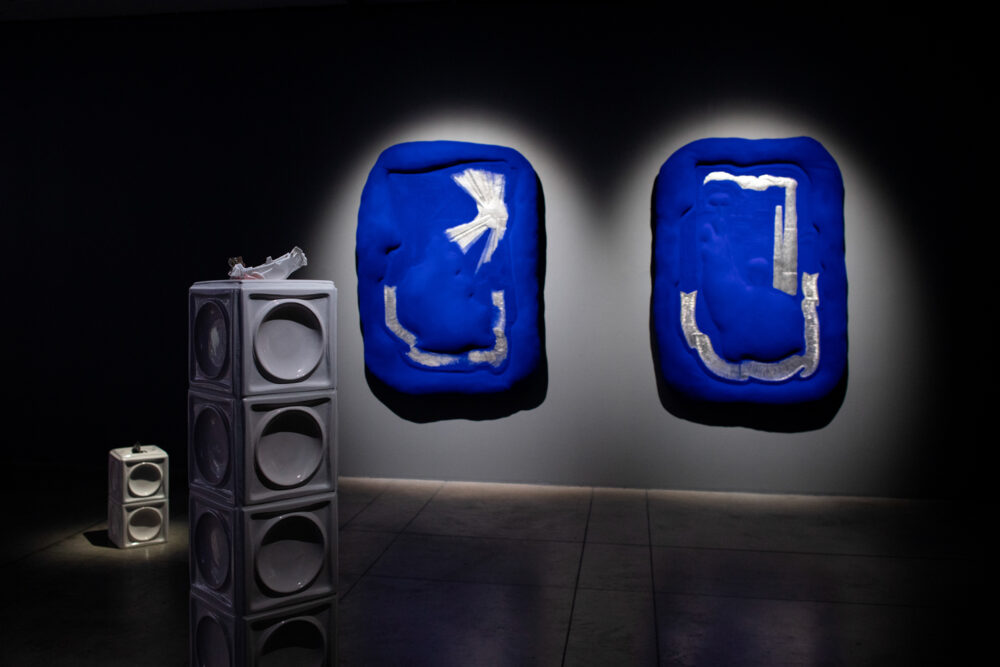
What are your creative plans for the future?
The coming months are shaping up to be both exciting and intense, with several exhibitions that continue to expand my research into the politics of time and the current condition of visual culture.
In June, I’ll be presenting the video work The Night at the Kistefos Museum in Jevnaker, Norway. In July, I’ll be part of Planet on a Pin at Voloshyn Gallery in Miami, where I’ll be contributing a work that explores alternative histories and spatial disorientation—asking what it means to map a world in flux.
Then, in September, I’ll be showing work at the Klaipėda Biennial in Lithuania as part of the exhibition Sunset Every Two Years. Around the same time, I’ll also take part in Breaking the Course of the European Boomerang at Pragovka Gallery in Prague.
Finally, in October, as part of the Kyiv Biennale, I’ll be exhibiting at the Museum of Modern Art in Warsaw, where a new project is currently in development. It will delve deeper into the role of technological eternity and the preservation of memory and history.
I’m also beginning research for a long-term project about the archival future—how we preserve, misremember, or algorithmically overwrite histories in times of rupture.
